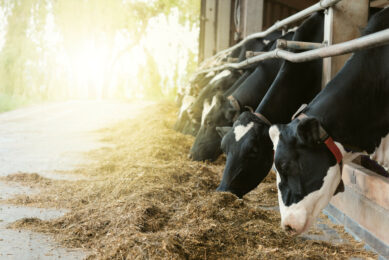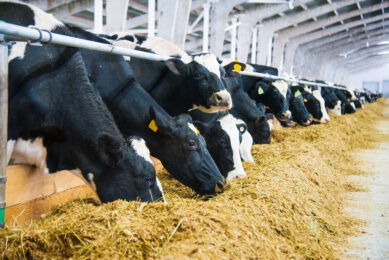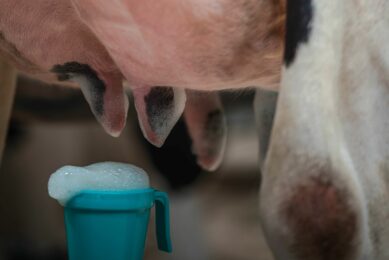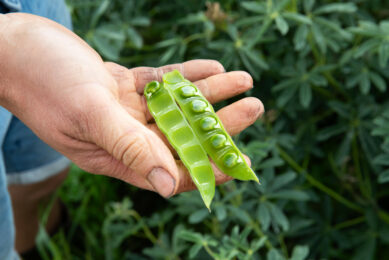Grazing: Considering the opportunities for dairy cows
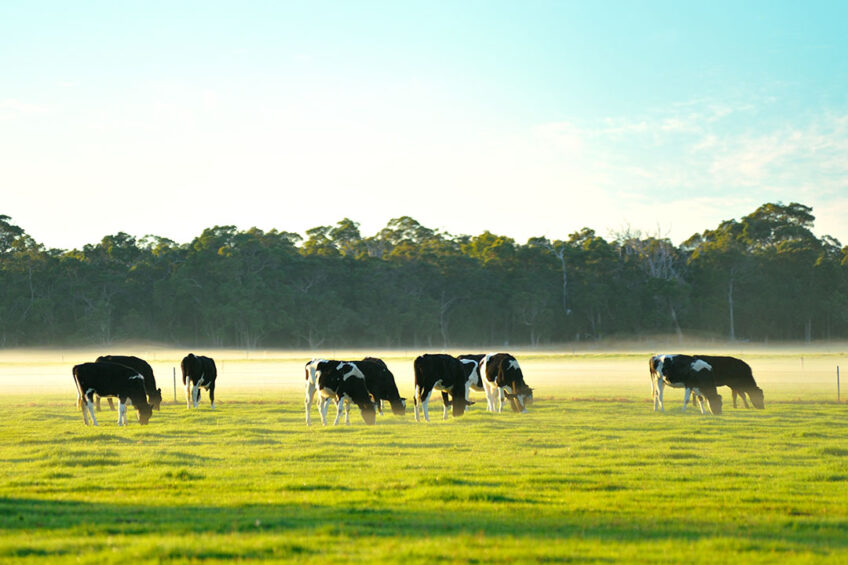
Grazing plays an important role in milk production in most regions. The future is bright for this production system if we consider all the opportunities it presents.
In pasture-based production systems in temperate regions, production per hectare is often a more relevant factor than production per head. Before focusing on the opportunities that exist in a pasture grazing system, we have to be aware of the challenges grazing presents such as variable and unpredictable herbage growth, lower daily herbage intake, lower output per animal, lower efficiency of N use, and inefficient grazing management.
On the other hand, among other grazing opportunities, there is a wider consumer recognition of the perceived enhanced nutritional value of milk from grazed cows, coupled with greater appreciation of animal health and welfare, all contributing to the future sustainability of demand for milk from dairy cows on pasture. In a recent study, researchers from UK universities (University of Nottingham and University of Bristol) elaborated on the opportunities.

Milk quality and consumer perception
Production methodology is an important aspect of animal-based products and milk is no exception. The quality of animal-based food products usually relates to sensory characteristics, human health and production method ‘naturalness’.
On this aspect, the researchers reviewed that forage-fed animals produce meat and milk with more beneficial fats to human health than that of concentrate-fed animals. They associated this to high omega-3 PUFA, conjugated linoleic acid and natural antioxidants found in forages. They emphasised the importance of plant breeding in improving the lipid content of grasses, in turn, improving animal health and fertility through the supply of omega-3 PUFA.
The added value of grazing production systems is clear to consumers who wish to purchase more of naturally produced milk products as they see them as animal welfare friendly, more sustainable, safer, and of high quality,” the researchers said.
From their research, they found clear evidence of growing consumer preference for milk from grazed livestock. For example, they mentioned supermarkets and milk buyers in Europe (e.g. UK’s Marks and Spencer Ltd) which are setting targets and standards that require dairy cows to graze pasture. Other countries focus on policy. For example, the Swedish Animal Welfare Ordinance requires cattle to be grazed on pasture in summer.
In grazing systems, animals have the possibility to express their natural behaviour…”
Better animal welfare and health
Grazing is more animal welfare friendly than housed or feedlot type systems. “In grazing systems, animals have the possibility to express their natural behaviour, are usually not restricted in terms of space, and can roam and therefore exercise,” said the researchers. Additionally, grazing systems allow the expression of social hierarchy in herds as well as social contact. Dairy cows on pasture usually have ample space for lying (uninterrupted lying) and can easily transition between standing and lying.
 Increase pasture use: Steps to success
Increase pasture use: Steps to success
Here we dive into the latest findings on how to increase use of pasture and explore and face the challenges that come with it – while protecting milk quantity and quality.
Provided the walking distance is not too long and roadways are well maintained, the ample locomotive freedom results in low incidences of lameness. It was also found that the risk of mastitis is greater in cows housed indoors, as cows on pasture have more space and can easily avoid lying in dirty areas. All these factors contribute to better animal welfare and health. Interestingly, the researchers also pointed out that suitable breeds or strains for grazing systems are robust and adapted to achieving a large intake of forage relative to their potential milk yield, have a high health and fertility status, and have high survivability rates.
Protecting the environment
The pressure on agriculture to reduce environmental emissions and eutrophication continues to increase. Therefore, the challenge in a grazing system is to identify feasible strategies to increase efficiency of N use. Grazing systems that optimise pasture production and use have a lower N surplus (less N loss to water), as grass is present throughout the year, the capacity to capture N is high. In addition, the researchers also reported that incorporating other species into grassland swards can reduce methane emissions, as studies show a 12% reduction in methane emissions per kg DMI when cows are grazed grass-white clover swards compared to grass only.
 Maximise use of grazed grass for cost effective milk production
Maximise use of grazed grass for cost effective milk production
Dairy farmers now, more than ever, must ensure they maximise the use of every square inch of grazed grass to help produce milk at a lower cost.
Of interest as well is that grasses with higher water-soluble carbohydrates offer a better balance between rumen-degradable protein and fermentable carbohydrates in pasture systems, resulting in greater efficiency of N use. The breeding of such grasses, and forage legumes such as white clover, is a great opportunity in grazing systems. On the other hand, nitrification inhibitors and urease inhibitors when applied with fertiliser can minimise N loss in the field. And of course, pasture-based systems reduce the requirement for purchased feedstuffs and the emissions associated with transporting and feeding.
Taking advantage of new technology
Looking at grazing management, these scientists see the introduction of automated techniques for monitoring grazing behaviour and pasture allocation as key to improving grazing efficiency. For example, neck-mounted accelerometers have been used to estimate grazing time and speed of biting, helping determine when additional grass should be allocated; this technology is now being commercialised. On this aspect, the researchers think a great advancement in technology would be to use signals from neck-mounted sensors to predict intake when livestock are grazing pastures of varying composition and quality.
 Transitioning to pasture – steps and best practices
Transitioning to pasture – steps and best practices
Dairy Global has gathered thoughts on best practices from experts in several parts of the globe.
The researchers also looked at some examples of precision agriculture technologies; they described the GPS-based system of virtual pasture allocation which consists of a solar-powered GPS collar that tracks the animal’s location relative to virtual boundaries defined as GPS co-ordinates to create a virtual fence. “The system could replace the need for permanent and temporary fences while keeping animals away from environmentally sensitive areas,” they said. There is also a GPS-assisted fertiliser application which minimises the risk of over application. In addition, tools such as the spring rotation planner, Grass Wedge, GrassHopper, PastureBase, and satellites provide information on grass availability, surpluses, and deficits – important when considering supplementation and fertilisation. In the future, the researchers see the use of robotics and electromagnetic reflectance in developing vegetative indices to predict forage characteristics.
Other economic and labour efficiency advantages of grazing include a reduced requirement for reseeding (fewer labour costs), feed and slurry storage…”
Economic efficiency
When all has been said, it comes down to whether the production system is realising economic benefits. Economic efficiency is simply defined as maximising the returns from a fixed set of resources, e.g. land, labour, and capital. In temperate regions, grazed grass is the most economic feed resource for milk production. Grazed grass is almost a complete diet (contains fibre, protein, energy, minerals, etc.); it has the potential to significantly contribute to the economic sustainability of milk production systems as it reduces production costs and costs associated with the environment. “Provision of high-quality pasture throughout lactation can support relatively high levels of DM intake and milk output per cow, together with the supplementation (when necessary) of low-cost but high-energy feeds,” said the researchers. Other economic and labour efficiency advantages of grazing include a reduced requirement for reseeding (fewer labour costs), feed and slurry storage, and mechanical operations including silage harvesting, feeding, slurry spreading etc.
Join 13,000+ subscribers
Subscribe to our newsletter to stay updated about all the need-to-know content in the dairy sector, two times a week.



